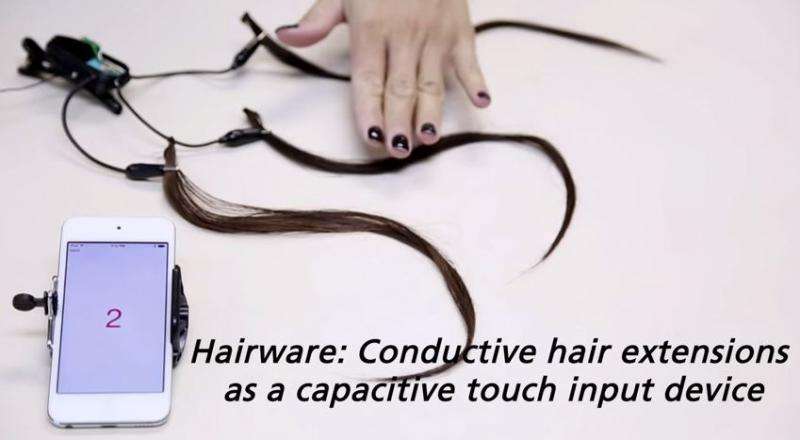Beauty technology? Don't be concerned if at first you missed the mark. "Beauty technology" does not refer to how ingredients are processed and packaged on shampoo and soap assembly lines. Katia Vega is a post-doc researcher with a PhD in computer science from the Pontifical Catholic University of Rio de Janeiro; she can demonstrate what it is. She has been working on wearables and the virtual world, bringing beauty technology to a different place in technology.
The vision among Vega and team is one of beauty tech as an interactive platform. Imagine if you move your fingernails and you open a door. Or if you blink and move objects. Or if your nails embed electromagnetic components. In short, in Vega's world, beauty technology is an emerging field in wearable computers.
Vega and team said they believe that "the next logical step in wearable computers seems to be the use of the body's roughly two square meters of skin as a canvas for applying sensors and attaching other computing devices in ways that enhance human experience."
The researchers have turned to the power of hair; the researchers have fashioned conductive hair extensions as a capacitive touch input device. Paul Marks in New Scientist said Thursday that "By plaiting conductive, metalized hair filaments into natural-looking hair extensions, Vega and her colleagues have now created a hair-wearable switch that can discreetly activate apps by touching it a set number of times."
A video shows females with long hair touching their strands, running their fingers up and down hair, sending a text message, recording (gasp) a conversation, sending location and taking a selfie, just by touching their hair.
In video notes, the research team wrote, "Normally, while someone touches her own hair, unconsciously she is bringing comfort to herself and at the same time is emitting a non-verbal message decodable by an observer. However, when she touches on Hairware, she is not just making this unconscious behavior because she will be triggering an object. Thus, we add new functionalities to hair extensions, turning them into a seamless device that recognizes auto-contact behaviors concealed to outside observers. Therefore, Hairware brings the opportunity to make conscious use of an unconscious auto-contact behavior. "
Their paper, "Hairware: The Conscious Use of Unconscious Auto-contact Behaviors," by Vega, Marcio Cunha and Hugo Fuks, Pontifical Catholic University of Rio de Janeiro, was presented at the IUI 2015 in Atlanta(IUI stands for Intelligent User Interfaces). They discussed Hairware as a prototype that connects chemically metalized hair extensions to a microcontroller, turning it into an input device for triggering different objects. Hairware behaves as a capacitive touch sensor. It can detect touch variations on hair, and machine learning algorithms are used to recognize the user's intention.
They said they used Hairware to trigger different devices such as a TV, home appliances and smartphones.
For their study, they recruited five females, most of them had long hair or had used long hair, and knew about hair care. All of them said they touched their hair when they felt anxious or were thoughtful. All were right handed and used electronic devices such as smartphones and tablets daily. They used five touches and they were required to make each touch ten times.
Study participants in interviews described how they might use Hairware. "Most of them recommended using it as a security device," said the paper. "That is, when they feel in danger or are located in a risky area, they would like to send a message to the police or to someone they trust without anyone around noticing that she is doing it."
Other suggestions were to use it to turn house appliances on and off. and as notification of stress. The authors stated, "We envision the use of Hairware in situations whenever the interaction is intended to be hidden such as in certain meetings, fir [sic] secret agents and for magicians."
The authors added that Hairware could be used for personal safety as well, "as a tool for protection against risky situations."They said it could be used an alarm device that sends messages with the user's location. It could also embed an RFID and other sensors to provide evidence "to the law court and the police."
To any observer who has seen females touching their longish straight hair, there is nothing out of the ordinary that would suggest a communication relay is going on. The authors stated, "Our approach is to use Hairware as an input device that senses human touch on hair that are not noticeable by an external observer. In this way, depending on the way Hairware is used, there are some concerns related to privacy that could be controversial. For example, a Hairware user could start recording a conversation without authorization of the observer."
The authors said that future work will include the use of Hairware not just as hair extensions but hair replacements, as a beard. Other sensors such as accelerometers and gyroscopes will be integrated on the hair extensions to make combinations of movements and hair touch.
© 2015 Tech Xplore























